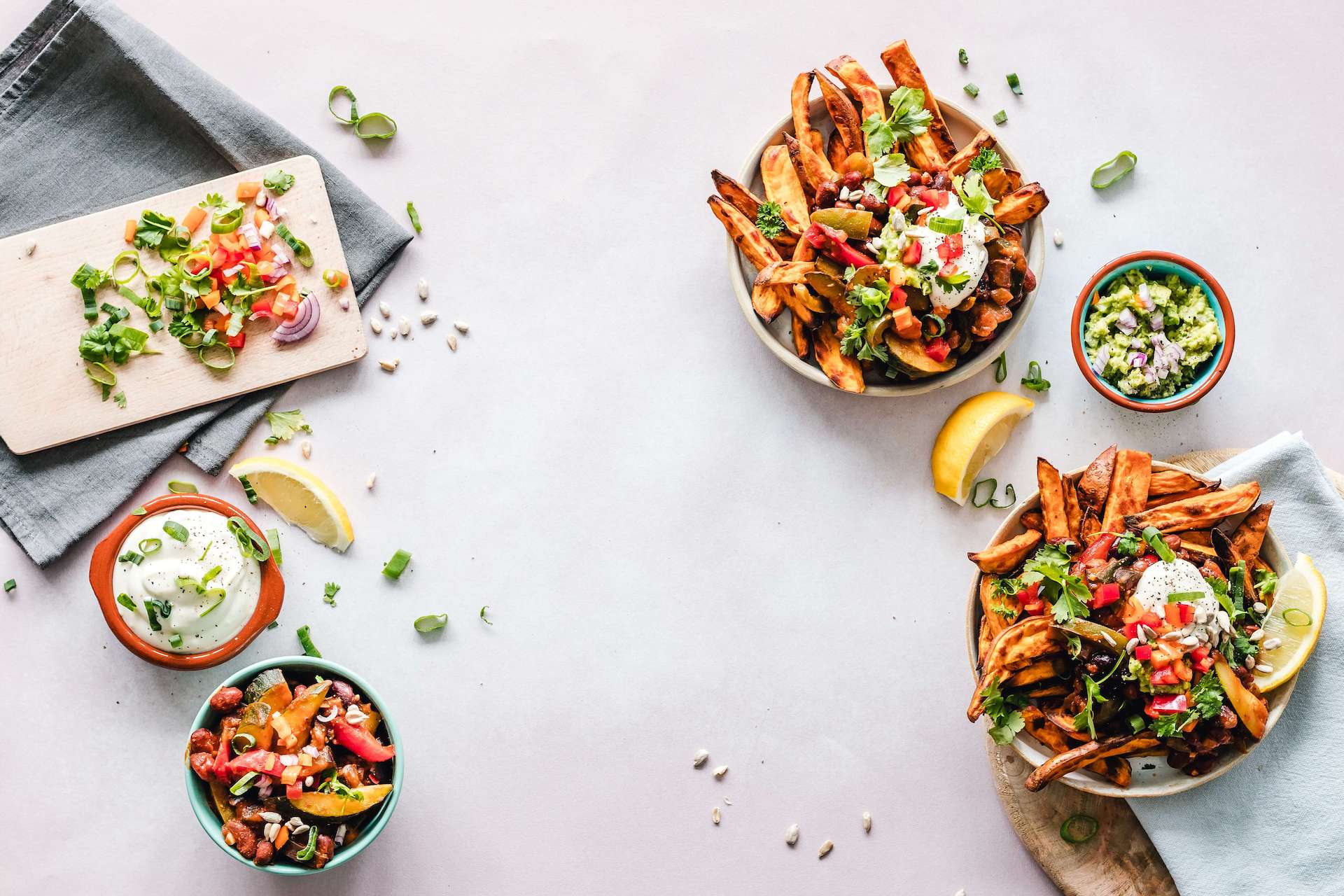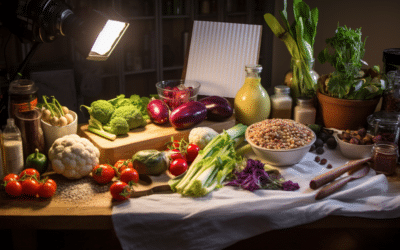As a food blogger, you understand the importance of SEO in driving traffic to your website and ultimately increasing your visibility and revenue. However, with so much information available on the subject, it’s easy to fall victim to common SEO myths that can actually harm your rankings. In this article, we’ll debunk the top 5 SEO myths that every food blogger should know.
From keyword stuffing to the importance of meta descriptions, we’ll explore why these myths are false and provide you with actionable tips to improve your SEO strategy. By the end of this article, you’ll have a clear understanding of how SEO works and be equipped with the knowledge to take your food blog to the next level. So, let’s get started and separate fact from fiction when it comes to SEO for food bloggers!
Myth #1: “SEO is a one-time task”
Myth #1 in SEO is the belief that it is a one-time task that can be accomplished and then forgotten. However, the truth is that SEO is an ongoing process that necessitates continuous optimization and monitoring. This is because search engines constantly change their algorithms and ranking factors, making it essential to keep up with the most up-to-date SEO best practices to maintain and enhance your website’s ranking.
According to research done by Ahrefs, it takes between 3-6 months for SEO to kick off. I have observed this pattern both with my other clients and on my own food blog. And to be fair, the best results are visible after 12 and more months.

On the other hand, I do have a negative experience with a client that stopped doing SEO after 3 months because the results were not visible. The main reason though was not the quality of our SEO services, but the commitment and engagement from the client.
So in case, you want your food blog to become successful, get ready for a bumpy and long road.
Tracking and analyzing your results regularly is critical to ensure that your SEO efforts are practical. Tools like Google Analytics and Search Console can be used to accomplish this, providing valuable insights into your website’s performance and user behavior. By analyzing this data, you can identify areas for improvement and modify your SEO strategy accordingly.
Staying up-to-date with the latest trends and best practices is also essential for optimizing your food blog for SEO. You can achieve this by attending industry events, following SEO blogs and forums, and networking with other bloggers and influencers in your niche.
Myth #2: “Keywords are the only important factor in SEO”
While keywords do play a crucial role in SEO, they are not the sole determinant of a website’s ranking. There are several other important factors that search engines consider, such as content quality, website speed, user experience, and backlinks.
Focusing exclusively on keywords while ignoring other aspects of SEO can actually harm your website’s ranking. One of the most common SEO myths is that keywords are the only important factor in achieving high search engine rankings.
Keyword stuffing, or overusing keywords in your content, can result in penalties from search engines and damage your credibility with your audience. Therefore, it is critical to create high-quality content that provides real value to users. This includes providing useful information, engaging visuals, and a unique perspective on your topic.
It is simply not enough to fill your recipe post with tons of keywords. It is better to give users what they want as fast as you can. And the “jump to” recipe buttons might not help here.
Myth #3: “Link building is bad for SEO”
Link building, the process of acquiring backlinks from other websites, has gained a reputation as a shady and unethical practice. However, when done correctly, link building can improve your website’s ranking on search engines. The key is to focus on building high-quality, relevant backlinks from reputable websites within your niche.
Despite the common myth that link building is no longer relevant in today’s SEO landscape, it is still a critical factor. In fact, search engines use links to determine the authority and relevance of your website.
It’s important to note that not all links are created equal. Low-quality or spammy links can harm your rankings and credibility with search engines. Instead, focus on building high-quality, relevant links from reputable sources. You can achieve this by creating engaging, shareable content, building relationships with other bloggers and influencers, and promoting your content on social media.
When building links, anchor text is another critical factor to consider. The text used to link to your website is called anchor text and it should contain the words related to the links.
In order to check your backlinks you can use SEO tools like SE Ranking or Semrush. Analyse which links are the most valuable and the ones that look spammy. Filter out the low-quality links, follow the Google Search guidelines, and disavow them via Google Disavow Tool. This will help you to keep your backlink structure clean.
Myth #4: “SEO is all about tricking search engines”
There’s a common misconception among some that SEO is simply a matter of outsmarting search engines by using clever tricks and manipulative techniques to boost rankings.
However, this couldn’t be further from the truth. In reality, search engines like Google use complex algorithms that are designed to deliver the best possible results to users based on their search queries. These algorithms take into account a wide range of factors, including content quality, relevance, user experience, and more.
Attempting to “trick” search engines by using black-hat SEO tactics, such as keyword stuffing, link schemes, or cloaking, can actually harm your website’s ranking and reputation. These techniques may provide short-term gains, but they’re likely to result in penalties and a long-term loss of traffic and credibility.
Instead, a successful SEO strategy should focus on creating high-quality content that meets the needs and interests of your target audience. This means conducting thorough keyword research, optimizing your website’s structure and navigation, building high-quality backlinks, and providing a positive user experience.
By focusing on these core elements of SEO, you can improve your website’s visibility and attract more organic traffic over time.
Myth #5: “Social media has no impact on SEO”
Although social media may not have a direct impact on your website’s search engine ranking, it is still an important component of your overall SEO strategy. The role of social media in SEO is often misunderstood, as it doesn’t directly affect how search engines rank your website.
However, social media can have an indirect impact on your website’s SEO by increasing brand awareness, building a loyal following, and driving traffic to your website. These factors can ultimately contribute to higher search engine rankings over time.
Through social media platforms that are suitable for food blogs like Instagram, Pinterest, and Facebook, you can share your content and engage with your audience. This can help to increase your website’s visibility and brand authority.
Having a strong presence on social media can indirectly impact your website’s ranking on search engines. Besides helping to build a following and increase brand awareness, social media profiles themselves can also rank on SERPs.
To leverage social media for SEO, focus on creating high-quality, shareable content that resonates with your audience and encourages engagement. Engage with your followers and use social media to drive traffic back to your website. By aligning your social media strategy with your SEO goals, you can improve your website’s search engine ranking and online visibility.
Conclusion
In conclusion, as a food blogger, it’s essential to dispel any SEO myths and misconceptions to improve your website’s ranking on search engines. Following best practices and avoiding common pitfalls can help you build a strong SEO strategy that increases your blog’s visibility and attracts a larger audience, ultimately growing your business.
To achieve this, prioritize quality content, a positive user experience, effective link building, ongoing SEO efforts, and catering to your audience’s needs and interests.
To optimize your food blog for SEO, begin by thoroughly researching your target audience and their search habits. Then, focus on creating high-quality and engaging content that resonates with your readers. Using visuals, such as photos or videos, can enhance your content and help to make it more shareable on social media.
Building high-quality, relevant links from reputable sources is also crucial, as it helps to demonstrate your blog’s authority and relevance to search engines.
Staying up-to-date with the latest SEO trends and best practices is vital for long-term success. Continuously track and analyze your SEO efforts to determine what’s working and what’s not, and adjust your strategy accordingly.
By following these steps, you can optimize your food blog for SEO and enjoy increased traffic and revenue, all while providing valuable content to your audience.
Not sure how to deal with your SEO? Have a look at our SEO Kits and get a FREE 30-minute consultation.






0 Comments